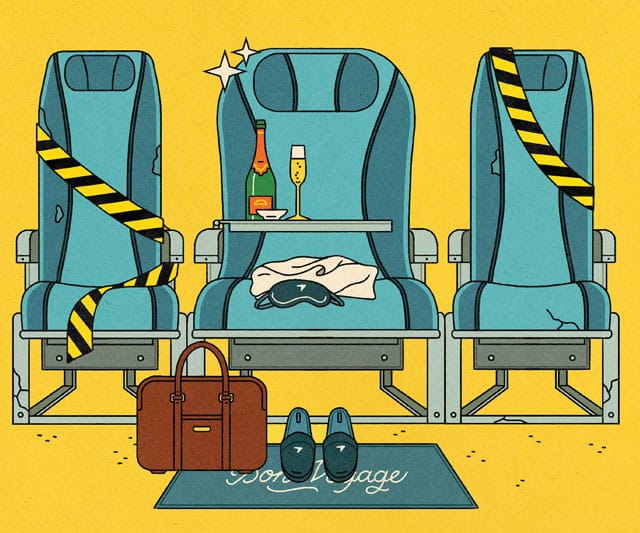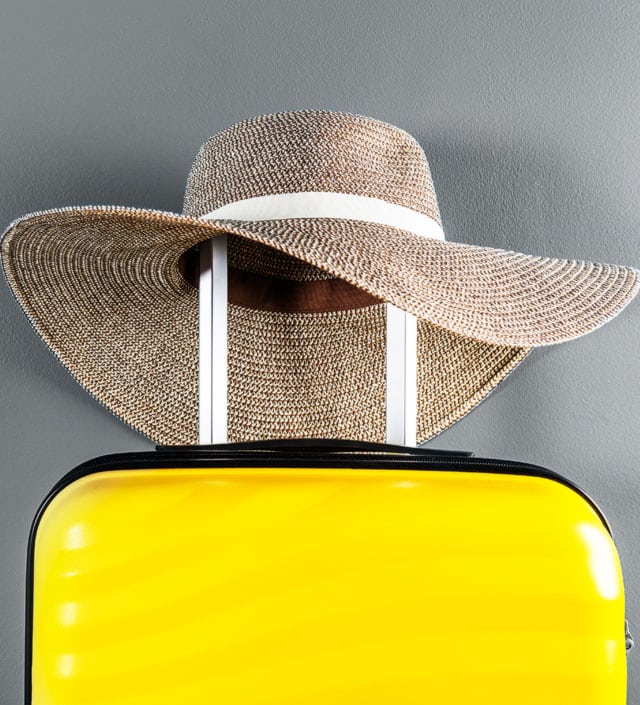Does it seem like that long walk back to economy class goes past more and more rows of cushy premium seats? You may be right.
Driven by a rise in leisure travelers willing to pay more for a wider seat, extra leg room and a nicer meal in premium economy or first or business class, airlines are cashing in by reconfiguring their cabins to accommodate more of those higher-priced comfy seats, and using larger planes that have more premium seating on existing routes.
The moves are significant: Major U.S. airlines are expanding premium seating by 25% to 75% in portions of their fleets.
Leisure travelers began upgrading in earnest as the pandemic eased, said David Slotnick, who follows the aviation industry for the travel website Points Guy. Still feeling the lingering fear of an airborne virus, some fliers felt safer with a little more space between them and the passenger next door, and they were willing to pay more for it. And after months of not spending any travel dollars, there was a good deal of pent-up demand.
Premium seat prices fell during the pandemic because business travelers weren’t flying, said Slotnick, giving leisure travelers a chance to experience life at the front of the plane in first, business and premium economy seats. Airlines noticed the appetite of these customers and have been setting prices as high as they can while still feeling affordable, he said.
The price of airline tickets overall has also surged as inflation has risen and travelers have rushed to make up for lost time. At the same time, previously lagging business travel has started to pick up again.
Airlines see this shift in demand as a financial boon, said Chris Lopinto, a co-founder of ExpertFlyer, a website that provides seat maps, cabin upgrade availability and other information to frequent flyers. Aircraft are being upgraded with more premium seating to increase revenue per flight, Lopinto said.
Cabin retrofit projects are planned over several years and take into account the age of the existing interiors and customer demand and expectations, among other factors, according to Mark Muren, United Airlines’ managing director for identity, product and loyalty. Planes need to be taken out of rotation to get this work done, so airlines don’t undertake it lightly, said Helane Becker, an airline analyst at Cowen, an investment bank.
United, for example, has increased the capacity of domestic premium seating — which includes Economy Plus and first class — by 25% overall compared with the beginning of 2019. In North America, there will be more than 53 premium seats per flight by 2026, about 75% more than there were in 2019. On some planes that fly internationally, United expanded the number of business class seats to 46 from 30 by removing some economy seats. Passengers are most likely to experience these changes on United’s cross-country flights (between San Francisco and Newark, for example) or those to Hawaii, according to aviation data analytics firm Cirium.
American also has plans to increase premium economy and business class seating, adding 45% more on long-haul flights by 2026. The carrier’s Boeing 777-300ER, 787-9 and Airbus A321XLR jets will all offer more premium economy and business class seating. Those aircraft are typically used on long-haul international and transcontinental routes, according to the company, but the schedule has not been set for 2024 network routes yet, which is when the changes will begin to appear.
Delta will offer 15,000 more premium economy or business class seats a day compared with before the pandemic, according to the company. On Delta’s 767-400 planes, 20 economy and six business class seats were taken out to make room for a 20-seat premium economy cabin. On some A330 models, 16 premium economy seats were removed to install 21 business class seats. Customers will most likely see the changes on Delta’s trans-Atlantic routes, and possibly also on domestic routes such as New York to Los Angeles, and Atlanta to Honolulu, according to analysis by Cirium.
Some of the cushiest seats are getting even more luxurious. Delta One “cabins,” available on some international flights, offer full-height closing doors along with a lie-flat bed and other amenities.
The premium cabins may be growing, but if you want to lie back and enjoy one of these new seats, it’s still going to cost you: In early May, a sample round-trip from New York to Los Angeles on the three major airlines for the first week of June started at about $300 for economy, $900 for premium economy and $1,200 for business.
c.2023 The New York Times Company. This article originally appeared in The New York Times.







